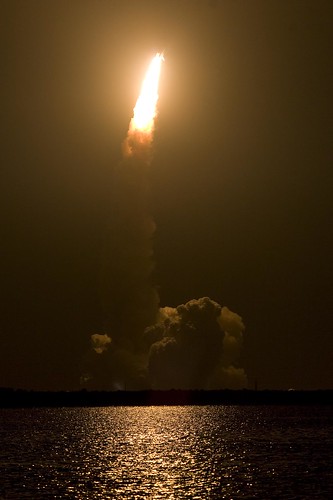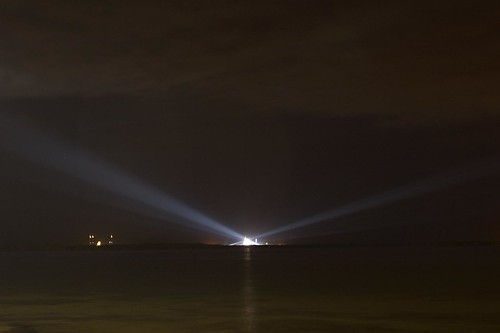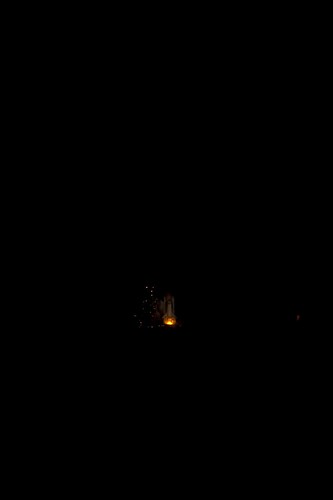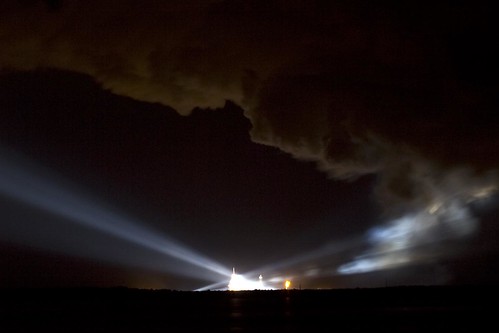
Here are my photos of the STS-130 launch early Monday morning. For those interested, I had my camera on a tripod and used my 70-200mm lens, fully zoomed of course. I framed the image prior to launch, and set the camera to f/8 and 1/125 based on the advice of this site. Sure, the launch was in the middle of the night, but it’s also bright. Very, very bright.

The launch pad lit up a few hours before launch
I also had my remote, which let me take pictures without viewing the launch through a viewfinder. I got to watch with my own eyes and still get a few photos. In retrospect, it would have been cool to try a long-exposure, but I wasn’t entirely confident I’d get the settings right, so I decided to go for single shots.
For those not familiar with all the details of a shuttle launch, this photo shows the moment of main engine ignition. The shuttle’s three main engines (the ones on the back of the orbiter) are actually lit 6 seconds before launch. Mission Control has 6 seconds to make sure they’re functioning properly, before…
…the solid rocket boosters light. The exhaust from the main engines (which is actually just steam, since the gas is just oxygen and hydrogen) billowed up between the orbiter and those of us on the causeway, which led to a cool silhouette of exhaust that the shuttle rose out of. When the solid rocket boosters light, there is no doubt — that thing is GOING somewhere, and fast.
It’s the solids that are so bright, and they light up the entire sky.
As soon as it clears the launch tower, the entire shuttle stack rolls on its vertical axis to better orient itself for the climb to orbit. This is what the “Houston, roll program” call that you hear from the astronauts means.
The shuttle is really zippy. It jumps off the launch pad like it’s been shot out of a cannon, and well, it kinda HAS. A launch is nothing more than a carefully controlled explosion.
After the solid rocket boosters separated two minutes into flight, we were able to see Endeavour’s main engines moving through the sky like a star. I think we would have been able to watch them through main engine cut-off at 8.5 minutes, except she went flying over the horizon and out of view.
By the time the crew performed the burn that truly puts them in orbit a half hour later, we were already in the car on our way back to Orlando. I watched the rendezvous from my laptop in an Alabama hotel room.








Sweet Pictures
With regards to the roll program:
Why was the launch pad constructed so the shuttle does not have to rotate immediately after launch?
Daniel, I’m not 100% sure. The main reasons for the roll program are to improve performance, control structural loads, and improve communications with the ground during the first few minutes of launch (i.e. make it easier for the antennas in the orbiter to reach the ground without being blocked by the ET).
But as for the launch pads themselves — my guess is that since they were originally built for Apollo, not shuttle, they’re not optimized for a shuttle trajectory.
I did not realize the pads were originally for Apollo. I guess that is why they weren’t optimized for the shuttle.
Great pics! Thanks for sharing.